Sound: 









Value: 









(Read about our ratings)
Measurements can be found by clicking this link.
Reviewing the Campfire Audio Satsuma earphones—essentially a new version of the beloved Campfire Comets—gives me a great chance to indulge in a more technical discussion of balanced armatures. Like the Comets, the Satsumas ($199, all prices USD) are basic passive earphones with a single balanced-armature driver per earpiece. Although balanced armatures are sometimes considered to be a magic prescription for high-end sound, it’s much more complicated than that, as I found in my recent interview with engineers from Knowles Electronics.
Typically, a balanced-armature driver is a tiny metal enclosure with a single tube that funnels the sound off the diaphragm and into the body of the earphones. This design was originally created for hearing aids, most of which are tuned to amplify sounds between about 1kHz and 6kHz. But for full-range earphones, it’s a problem, because the tiny diaphragm can’t move enough air to produce deep bass, and the sealed design of the enclosure has a higher resonant frequency and thus reduced bass extension. That’s why most balanced-armature earphones use at least two drivers per earpiece. There are single-driver balanced-armature earphones available, but most offer weak bass performance.
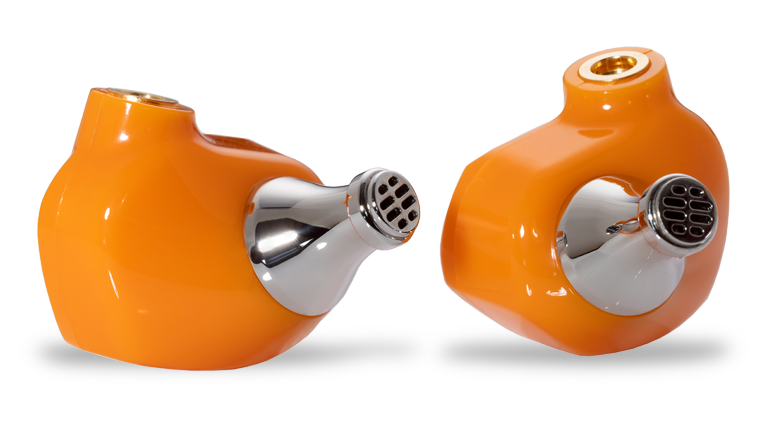
In the Comet and, now, the Satsuma earphones, Campfire attempts to overcome the downsides of using a single balanced armature by opting for one with a ported enclosure, which lowers the resonant frequency and increases efficiency at low frequencies. While many balanced armatures are mounted so that the driver fires more or less straight into the ear canal, Campfire Audio mounts their driver in a 3D-printed acoustical chamber that gives them more flexibility in tuning the driver’s response.
The difference between the two models is that the Comets are basically standard-style earphones—not that different in shape from the cheapie, no-name models you get for $10 at a truck stop—made from stainless steel. The Satsumas add a larger plastic body around the stainless-steel enclosure, which allows greater tuning flexibility and the over-the-ear cable routing that most fans of high-end earphones prefer.
Impedance is rated at 46.4 ohms and the rated sensitivity is 94dB—which would seem low, but that’s at 1kHz with a 67mV drive voltage. Industry standard (which, I’ll admit, is much in need of updating) is to measure sensitivity at 500Hz with 1mW of power at the rated impedance, which in the case of the Satsumas would be 215mV. That’s a 10.1dB higher signal level than 67mV, suggesting an industry-standard sensitivity rating of about 104dB—which, in turn, suggests that the Satsumas will play plenty loud enough from almost any portable device. In the measurements section, accessible through the link near the top of this article, you can see my sensitivity measurement, averaged from 300Hz to 3kHz with 1mW signal; I think this measurement gives a more consistent and representative rating than the 500Hz standard.
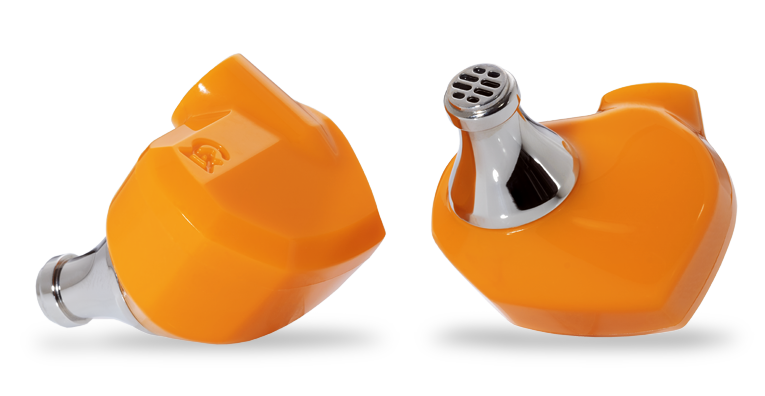
Campfire Audio also offers the Honeydew earphones ($249), which are similar to the Satsumas except that they use a 10mm dynamic driver instead of the balanced armature, and have a slightly lighter orange tint.
In the box
The package includes the headphones in a compact, canvas-sided traveling case lined with a soft material. The included, detachable 4′ (1.2m) cable is tipped in a 3.5mm stereo connector on the source end, and MMCX connectors going into each earpiece. Included are Final silicone tips in four sizes, along with generic silicone tips in three sizes, plus a cleaning tool and a Campfire Audio pin.
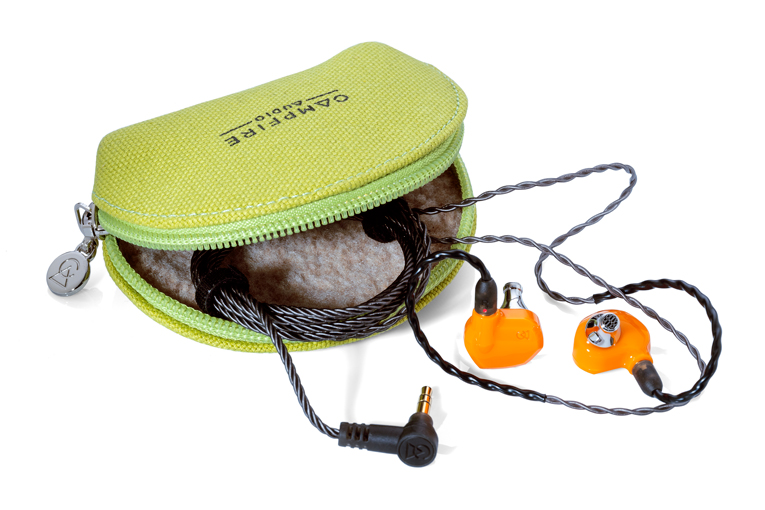
Use
Despite the generous selection of tips provided, none was big enough for me to get a reliable seal in my jumbo-size ear canals, so I did as I often do in earphone reviews, substituting SpinFit CP100 XL tips.
Like the original Campfire Solaris earphones, the Satsumas are vertically oriented, rather than horizontally oriented, as are most earphones with over-the-ear cable routing. It works fine, but if you’re used to other audiophile earphones, there may be a few days of adjustment to go through.
The Satsumas did play plenty loud when connected straight to my Samsung Galaxy S10 phone, but knowing that the single balanced-armature driver would be very sensitive to the output impedance of the source device, I did all of my listening with the AudioQuest DragonFly Cobalt DAC-amplifier.
Sound
After putting the Satsumas through the ten hours of break-in I give all headphones and earphones I test, I was eager to listen to them. I loved the Comets, but unfortunately, either I lost them or I loaned them to another audio writer and can’t remember who it was, so I was excited to relive that experience. But initially, at least, the experience was a little weird. Coming off of a few recent reviews of headphones and earphones that weren’t far off the Harman curve—i.e., full-sounding and immediately satisfying—hearing the relatively trebly sound of the Satsumas threw me off a bit.
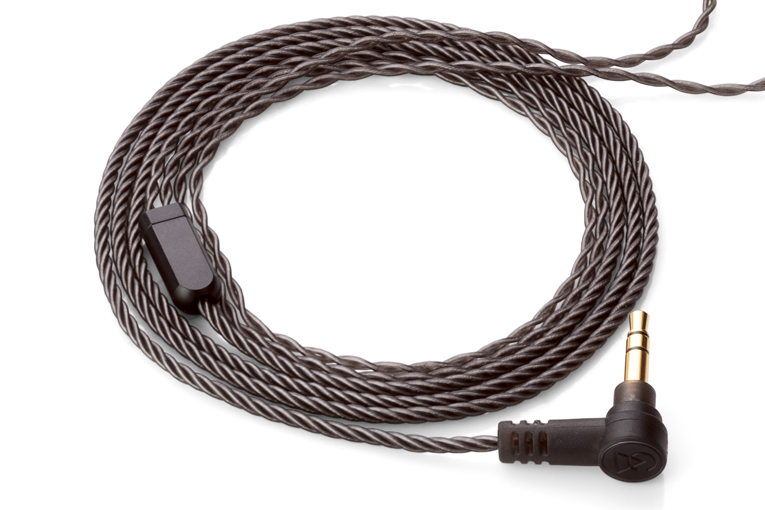
So I put on one of my all-time-favorite test tracks: the live version of “Shower the People” from James Taylor’s Live at the Beacon Theatre DVD (16-bit/44.1kHz WAV, digitally copied from the stereo track of the DVD, Sony). There was definitely some emphasis in the treble; Taylor’s voice didn’t sound as full and warm as it usually does. The bass was extended, but attenuated—it seemed to be down about 4 to 6dB from what I’d typically hear with most earphones. But the acoustic and electric guitars both came out more in the mix, and my ears were drawn to the vivid sound. I ended up using this track to compare the Satsumas with several other earphones; you can read those notes in the “Comparison” section below.
I’m thrilled that powerhouse singer/guitarist Jade Bird’s long-awaited (by me, at least) first full-length album, Different Kinds of Light (24/96 FLAC, Glassnote Music/Qobuz), is finally out, and I relished the chance to check it out through the Satsumas. On “Honeymoon,” the Satsumas definitely sounded the way I remember the Comets sounding: the treble was elevated, but in a way that, surprisingly, made the sound seem more kick-ass, not less. Bird’s vocals sounded super-clear and robust, and the guitar sounded incredibly clean, present, and insistent. The bass was certainly dialed back from what I expect the producer intended, but still, I loved it.
I quite often find myself at odds with my colleagues in the audio reviewing “business,” but not when it comes to Patricia Barber’s newest album, Clique (320kbps Ogg Vorbis, Impex/Spotify), which deserves every bit of effusive praise it’s so far garnered. Listening to “Trouble is a Man” through the Satsumas, I was nearly overwhelmed by the recording’s clarity—especially with the drums, which sounded like I was hearing them in a really good studio when sitting about six feet in front of the kit. Barber’s voice sounded clear and colorless . . . and surprisingly live and real, considering it was recorded with a microphone, and almost all vocal mikes have a pretty big “presence peak” in the upper midrange/lower treble.
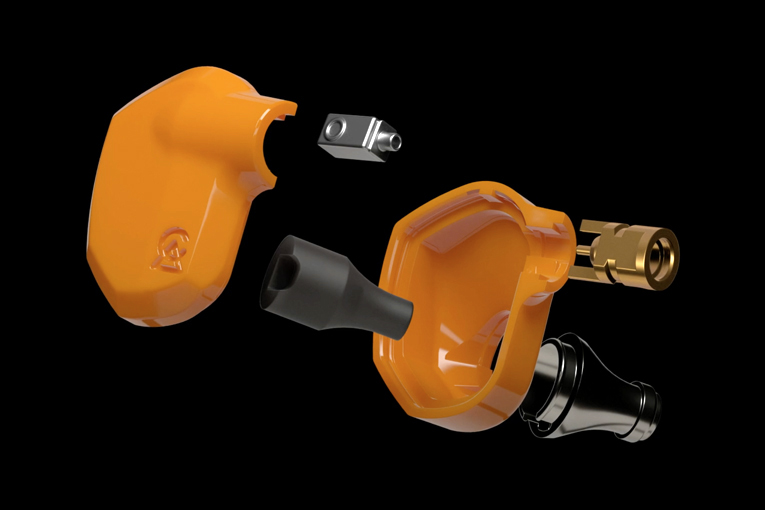
There wasn’t much going on in the bottom couple of octaves of bass, so much of the fundamental tones of the double bass were lost, and the instrument took on a “half-cocked wah” sound, as if it were put through a wah-wah pedal left in its middle position, or put through an EQ with the mids boosted and the bass and treble attenuated. But for all I know, it was; I’ve heard double bass recorded that way before, and it sounds pretty cool if that tone suits the tune.
Wanting to hear how the Satsumas sounded with fuller, more hard-grooving material, I put on Stevie Wonder’s “Higher Ground” (Innervisions, 24/96 FLAC, Motown/Qobuz). Again, the bass was attenuated by a few dB relative to what we’re all probably used to hearing on this old classic, but I was overwhelmed by the clarity, be it on Wonder’s voice (which didn’t sound thin at all) or on the two clavinet tracks, one hard left, one hard right, both played through a wah-wah pedal. (Incidentally, you can see him do the wah-wah clavinet thing on the great new documentary Summer of Soul, on Hulu.) What most stood out was the tambourine, which through the Satsumas became a more vital part of the groove—and which I realized, for the first time, sounded like it was sitting atop a hi-hat, because I could hear the jingles rattle when Wonder struck the hi-hat with his sticks.
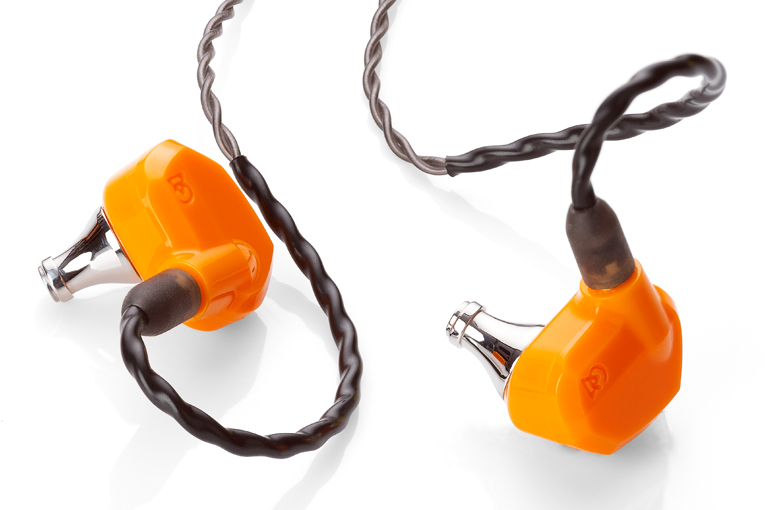
So I can’t say the Satsumas are hard-grooving earphones—but that shouldn’t hurt them much with classical, right? To find out, I put on my favorite recording of Berlioz’s Harold in Italy, Op.16, by the San Diego Symphony conducted by Yoav Talmi, with violist Rivka Golani and violinist Igor Gruppman (16/44.1 FLAC, Naxos/Qobuz). I bet by now you can guess what it sounded like. Yes, the big, dramatic orchestral hits didn’t really come off—it literally sounded like they went ahead and did the recording after getting tired of waiting for the bass section to come back from lunch. But the rest of the orchestra was portrayed with a huge, realistic sense of space—the string section just seemed to breathe, and Golani’s viola solos almost seemed to jump out of the Satsumas. That extra emphasis in the lower treble made it sound as if all the instruments had been individually miked and the whole string section brought up about 3dB in the mix. Was it an accurate rendition of an orchestra performing in a hall? I would guess not—but it was, undeniably, an exciting rendition.
Comparison
I compared the Satsumas mostly with the Honeydews and the Sennheiser IE 300s ($299), a set of dynamic-driver earphones that would seem to compete with both Campfire models, and which I loved for their balanced sound.
Going back to that James Taylor live version of “Shower the People,” I was amazed to hear how different the Honeydew and Satsuma earphones sounded. They look almost identical, but sonically, they’re almost exact opposites. The Honeydews have a big, full, warm sound—Taylor’s voice sounded much bigger and chestier, and his acoustic guitar suddenly sounded like a big dreadnought model rather than the concert-size model he actually played. The treble was still clear, but much less vivid; it sounded like the glockenspiel that highlights the ends of some phrases in the tune had been turned down about 5dB in the mix.
The Sennheiser IE 300s sounded more balanced than either of the Campfires—more or less in the middle, but leaning a bit more toward the Satsumas’ sound because of a couple of mild peaks in the treble. The IE 300s’ drivers didn’t sound quite as refined—there was a bit of a buzz compared to both Campfire models—but for me, the pleasing balance outweighed that small negative.
Conclusion
The Campfire Audio Satsuma earphones are not for bassheads, hardcore Harman curve fans, or those who demand a big, full, danceable sound. But audio enthusiasts who value maximum clarity and detail will absolutely love them. Even if you are into fuller sound, the Satsumas are inexpensive enough that you might want to buy a set just to give you a fresh perspective on some of your favorite recordings.
. . . Brent Butterworth
Associated Equipment
- Smartphone: Samsung Galaxy S10
- DAC-headphone amplifier: AudioQuest DragonFly Cobalt
Campfire Audio Satsuma Earphones
Price: $199.
Warranty: One year.
Campfire Audio
2400 SE Ankeny
Portland, OR 97214
Phone: (855) 204-1492, (503) 853-8608
Website: www.campfireaudio.com





